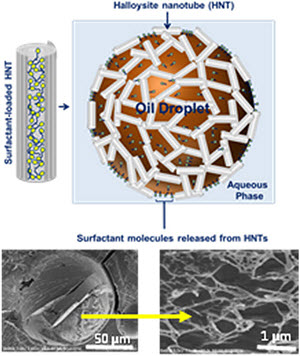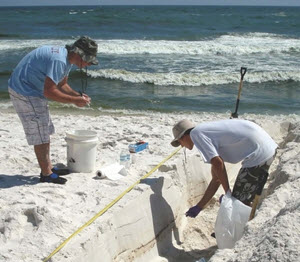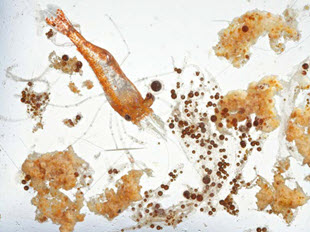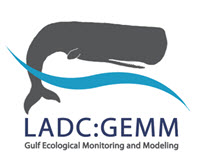Category Archives: People
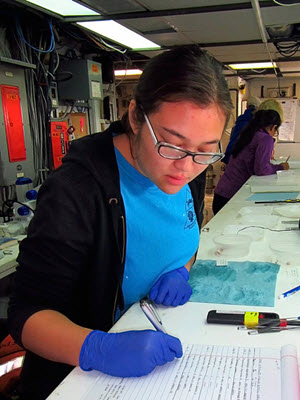
Laura Timm examines connections among shellfish ecology and evolution to help scientists understand how the Deepwater Horizon oil spill affected certain Gulf of Mexico species: “My work focuses on establishing pre-spill baselines and comparing them to samples taken 3-7 years after the oil spill, providing a timeline of crustacean recovery.” Pursuing a Ph.D. in biology Read More

The Spring Boy Scouts Advance-A-Rama (AAR) program has been conducted for over 25 years by volunteers from the Northeast Georgia Council’s Cherokee District. The AAR is hosted by the Warnell School of Forestry and Natural Resources at the University of Georgia. In recent years, over 200 scouts from troops in Alabama, Georgia, South Carolina, and Read More

Kelsey Rogers looks for evidence of oil and methane intrusion into Gulf of Mexico water and sediment, but finding these hydrocarbons is only the beginning of her work. Like a scientific crime scene investigator, Kelsey analyzes the chemical fingerprints of oil and gas and uses them to identify their source, such as from an oil Read More
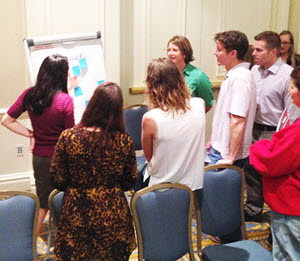
The four Sea Grant Programs in the Gulf of Mexico region, the Gulf of Mexico Research Initiative, and the Consortium for Ocean Leadership jointly co-hosted an outreach workshop at the 2016 Gulf of Mexico Oil Spill and Ecosystem Science conference on February 1 in Tampa, FL, called Sharing Oil Spill Science with Non-Scientists: Effectively Communicating Read More

While Consortium for oil spill exposure pathways in Coastal River-Dominated Ecosystems (CONCORDE) researchers sampled the northern Gulf to determine the paths and impacts of river outflow, a pair of citizen scientists, also commercial fishers, assisted from their own vessels. Hoang Nguyen Van of D’Iberville, Mississippi, and George Barisich of Ycloskey, Louisiana—Captain Nguyen and Captain George—took Read More
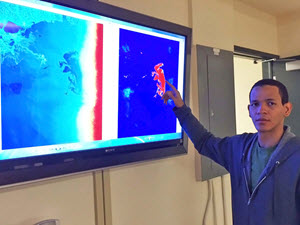
Juan Pinales is working on a computational modelling system that will aid oil spill monitoring efforts. He combines Synthetic Aperture Radar (SAR) data and oceanographic conditions recorded during the Deepwater Horizon incident to improve surface oil detection using a semi-automated machine learning method known as artificial neural networking. This method will help the system’s computations Read More

Graduate student Nathan Laxague’s recent posts to the CARTHE blog describe the methods, experiences, and challenges of researchers working on the ongoing LASER expedition. You can read his entries here and here to keep up with the project’s development. Excerpt from the CARTHE Blog: “… Walton Smith is somewhere off the middle Keys, dressed to the nines with fancy Read More

The Alabama Center for Ecological Resilience (ACER) Teacher Advisory Group is a team of local science teachers who will work with the consortium’s Educational Team to increase students’ interest in and understanding of the northern Gulf of Mexico. More Information: http://acer.disl.org/news/2016/02/02/working-with-the-experts/ The goals of ACER’s Education Team include communicating the importance of the northern Gulf of Mexico and Read More
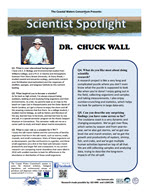
Chuck Wall has a B.A. in Biology and Environmental studies from Williams College, and a Ph.D. in Marine and Atmospheric Sciences from Stony Brook University. He works with the Coastal Waters Consortium (CWC) studying the salt marsh habitat and the community of benthic organisms that live in the salt marsh, such as worms, snails, mussels, Read More
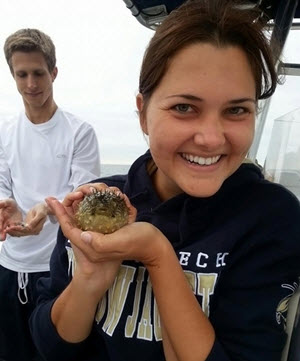
Emily Chancellor is applying her engineering and computer science background to a field that inspires her – marine science – focusing on how the oil spill may have impacted larval fish populations. Emily recently completed her masters in marine resource assessment at the University of South Florida (USF) and is a GoMRI scholar with the Read More
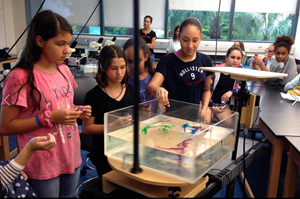
This past Saturday we had the pleasure of participating in the annual Exploring Marine Science Day for 6th-7th grade girls, organized by the University of Miami Rosenstiel School of Marine & Atmospheric Science and the Consortium for Advanced Research on Transport of Hydrocarbon in the Environment (CARTHE). We taught 50 girls from different Miami junior Read More

Chemical engineer Jordan Young has found his happy place on a research vessel in the Gulf of Mexico. He’s looking for changes in ocean acidity following the Deepwater Horizon spill. As the oil biologically degrades, some of it oxidizes to carbon dioxide and may increase acidification. The Earth’s oceans have maintained a relatively stable pH level Read More

Bryan Hamilton never planned to be a microbiologist, but when the opportunity arose to study microbes that produce biosurfactant in response to oil exposure, he was drawn in completely. His research investigated the potential connection between these microbes and natural surface slicks and if this connection could help scientists detect oil below the water’s surface. Read More
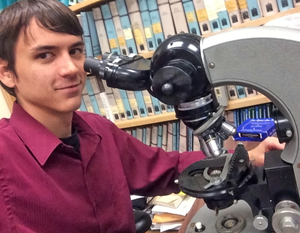
Jarrett Cruz has been all over the world studying nannoplankton, a marine species he did not know existed when his journey began. Jarrett’s research into these minuscule creatures spans both biology and geology as he studies the impact of oil on nannoplankton that live in the Gulf of Mexico. Jarrett, a geology Ph.D. student at Read More
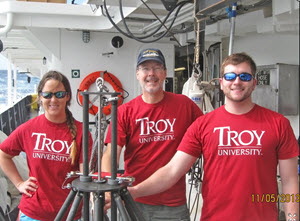
Ceil Martinec picks microscopic creatures out of mud collected from deep in the Gulf of Mexico. She is looking for possible lingering effects of the 2010 oil spill on sediment-dwelling animals and making some exciting discoveries along the way. “We are documenting new species for the area and studying the natural links or relationships between Read More
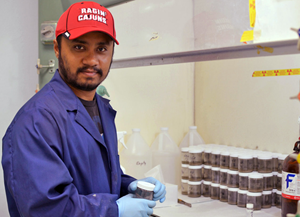
Nihar Deb Adhikary uses his veterinary training and microbiology research to better understand the connections between oil fate, microbial degradation, and sediment-dwelling organisms such as shrimp and clams. “Oil in coastal sediment can significantly impact the animals that live there,” he said. “I think it will be amazing if we can show that these benthic Read More
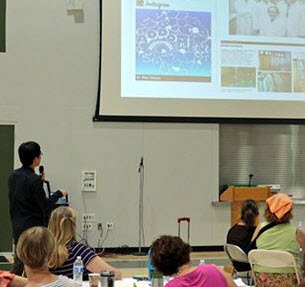
James Chiu presented theAggregation and Degradation of Dispersants and Oil by Microbial Exopolymers (ADDOMEx) Consortium’s research to nearly seventy teachers participating in a program called Team-E Science, which will help them better understand engineering concepts. The program is part of a three-year endeavor to implement engineering curriculum in Merced and Mariposa county schools. Underrepresented minority groups Read More
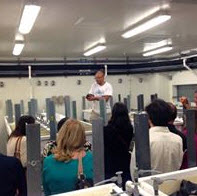
Earlier this month, South Florida teachers attended the Center for the Integrated Modeling and Analysis of the Gulf Ecosystem (CARTHE)-hosted science visualization workshop at the University of Miami, intended to help create improved future resources for sharing science. The workshop featured CARTHE science, NOAA’s global drifter program, RECOVER consortium, University of Miami Rosenstiel School scienitists Read More

Alek stands next to a map of his research area, holding the drift cards he used in his oil spill study in front of a nautical chart of the Salish Sea. (Provided by Alek) Fueled by a passion for science and endangered species, Alek designed and executed a research project that involved scientists from eight Read More

Bicheng Chen is dedicated to seeking the physical explanations behind everyday phenomena. His research on ocean turbulence and numerical modeling led him to investigate the interactions among wind, waves, and turbulence and their effect on oil transport and dispersion. Bicheng is a meteorology Ph.D. student at Pennsylvania State University and a GoMRI Scholar with the Read More

Boryoung Shin is breaking new ground in microbiology, uncovering little known facts about an enigmatic and important species in the Gulf of Mexico. Boryoung Shin works in an anaerobic chamber at the Kostka Lab at Georgia Tech. (Photo credit: Max Kolton) After the Deepwater Horizon incident, certain bacteria rapidly increased and helped degrade the oil. Read More
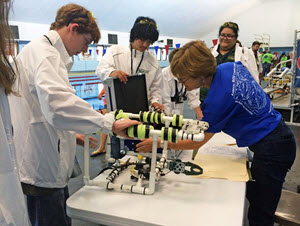
As science, technology, engineering, and math (STEM) skills become increasingly important to the 21st century workforce, what better way to foster those skills in middle and high school students than an old-fashioned friendly competition? Over the past four years, the Deep Sea to Coast Connectivity in the Eastern Gulf of Mexico (Deep-C) consortium and the Read More

Subham Dasgupta’s dedication to understanding oil and dispersant toxicology stems from his roots in India. Having grown up in a community where fishes are an important part of the diet, his research assessing oil and dispersant exposure’s effect on fish health has a special importance for him. “Oil spills can affect marine organisms, including the Read More

A fourth grade class at Singapore American School found Bob the Drifter and the CARTHE science group while researching ocean science and pollution online. CARTHE’s drifter experiments, GLAD and SCOPE, are helping scientists understand how ocean surface currents move pollutants such as oil. CARTHE’s visually-engaging experiments and their animated, data-gathering mascot “Bob” motivated these young students Read More

An interest in oil spill research led Olasehinde Owoseni from Ile-Ife, an ancient city in Nigeria, to the Louisiana coast. Such a change might seem intimidating, but Sehinde sees it is as a small step toward his greater goal. His research examines the use of miniscule clay particles for the development of safer and more Read More
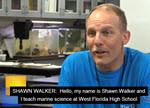
What could be better than having class on the beach and conducting actual research to boot? See how Shawn Walker, a marine science teacher at West Florida High School, transforms his students into scientists. A CPALMS perspective Video.

Caroline Johansen laughs when her family tells others that her research involves counting bubbles. But the bubbles she studies come from seeps at the bottom of the Gulf and contain naturally-occurring hydrocarbons that are an important part of the deep-sea ecosystem. Caroline wants to shed light on how much oil enters the water every day Read More
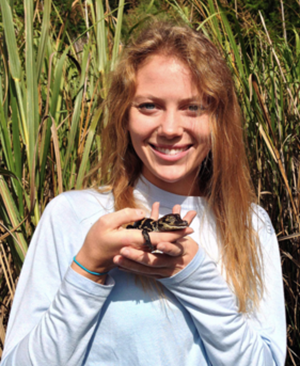
Unhealthy diet and inactivity are the first things that people think about that cause obesity. However, Alexis Temkin is finding an unexpected potential contributor to increased fat cell production: a component in dispersants used for oil spill cleanup and many personal care products. She is excited to share her stories about the scientific detective work Read More

After the Deepwater Horizon oil spill, many Gulf residents wanted to know where the oil was going and how fast it would get there. Conor Smith is improving the accuracy and turn-around time of satellite-derived surface current velocity estimates for better ocean transport information. Conor is working toward a method that accurately interprets these velocities Read More
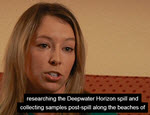
Watch how these high school students work alongside Woods Hole Oceanographic Institution experts conducting oil spill science. A C-PALMS perspective Video by Catherine Carmichael.
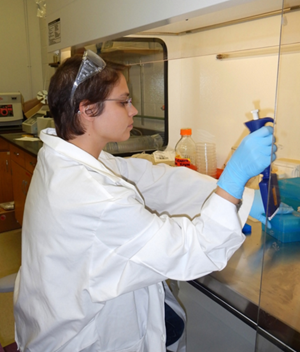
To show how the Deepwater Horizon oil spill impacted the Gulf of Mexico, Sarah Tominack is going back to basics. She feels that for scientists to quickly identify the Gulf in distress, they must have a better picture of what “normal” looks like, particularly for microscopic single-celled organisms at the marine food web base called Read More
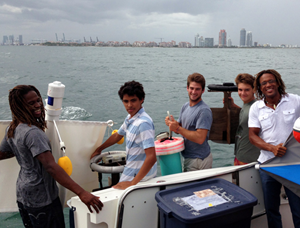
What do the Consortium for Advanced Research on Marine Mammal Health Assessment (CARTHE), the International SeaKeepers Society, and Fleet Miami have in common? Ocean research! Last September, CARTHE researchers from the University of Miami Rosenstiel School partnered with SeaKeepers and Fleet Miami to widen the reach of ocean and oil spill research in the local Read More
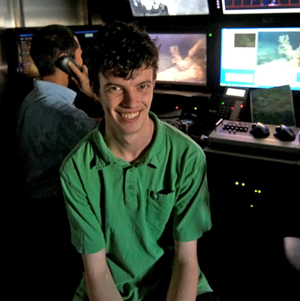
Deep below the surface of the Gulf of Mexico live vast canyons of coral. Recent news reports suggest that the Deepwater Horizon oil spill may have impacted the health of these corals. To find out, Richard Dannenberg is delving into their world, looking at the bacteria that live with the coral for clues about that Read More
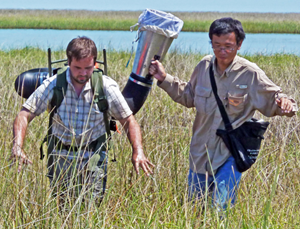
Can watching ants really contribute to understanding an oil spill? Yes, it can! Ants have acted as indicators of environmental change in the past. After oil from the Deepwater Horizon spill entered his research sites, Xuan Chen began uncovering new ways that ants can act as bioindicators of oil’s presence in and impacts on Louisiana Read More
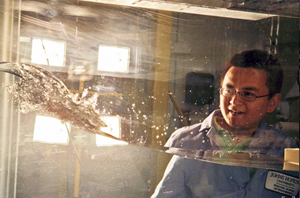
For Cheng Li, the beauty of our oceans is precious. He wants to protect that beauty by improving the tracking of and response to oil spills. Using a customized, self-built wave tank, he investigates the interactions between oil, dispersant, and breaking waves. Data from his wave experiments will contribute to better predictions about where and Read More
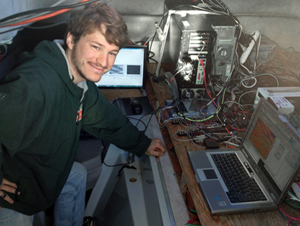
Nathan Laxague studies a small-scale subject matter that has potentially large-scale applications. Capillary waves – or ripples – on the ocean surface can indicate the presence of a film or oil slick on the water’s surface, making them “an important link in the chain of oil spill response.” Nathan is a physics Ph.D. student at Read More
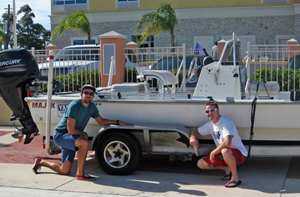
David Christiansen is dedicated to investigating water movement and using those findings to improve local water systems. He got his start monitoring Galveston Bay’s complex flow patterns as a precautionary oil spill measure. Dave’s hard work has taught him innovative problem-solving and has been applied to real-world oil spill response. Dave was an Engineering master’s Read More

Maria Vozzo’s strong interest in Deepwater Horizon research led her from North Carolina to Louisiana to study the oil’s effects on local oysters. Her work has a wide scope, from the oyster’s environmental conditions to their cellular responses. Maria’s creative adaptation of commercial oyster equipment for her research may also improve them for fisherman’s use. Read More
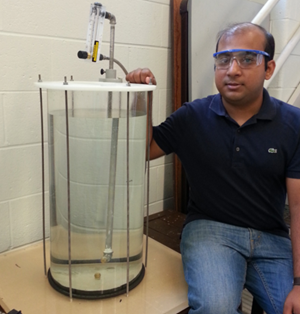
Amitesh Saha is on a mission to find safer alternatives to dispersants currently being used in oil spill cleanup. His research is showing promising results that nanoparticle materials could not only replace dispersants but may also help the marine environment’s response. Amitesh is a Chemical Engineering Ph.D. student at the University of Rhode Island (URI) Read More

NBA Champion James Jones took the stage for young fans this July, but not to talk about sports. Instead, his goal was to get kids excited about cutting-edge science happening in their home town. Over 40 kids participated in his week-long Crew 22 Training Camp hosted by the University of Miami Rosenstiel School of Marine Read More
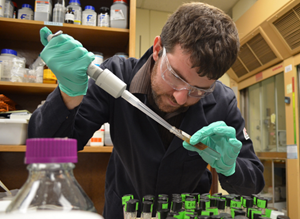
Andrew Worthen’s research is “all about discovering how we can steward the planet more responsibly,” something he gets closer to every day. While Andrew’s initial nanoparticle research focused on creating more efficient and eco-friendly oil extraction methods, he is now applying his findings to oil spill treatment and mitigation. Andrew is a chemical engineering Ph.D. Read More
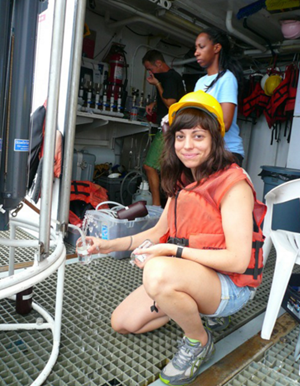
Alexandra Harper, a passionate environmental advocate, is using her oceanography expertise to help “society better balance human need with ecological health.” She is researching the potential relationship between the Deepwater Horizon oil spill and mercury levels in Gulf of Mexico fishes. Because rises in methyl mercury levels in fish increase chances of these toxins making Read More
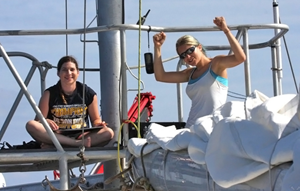
Kait Frasier listens to Gulf marine mammals to estimate how many there are and find out if their numbers are changing after the Deepwater Horizon oil spill. Kait sees dolphins as a good species to study because “everyone can see and understand them, not just scientists.” Kait, a Ph.D. student at the Scripps Institution of Read More
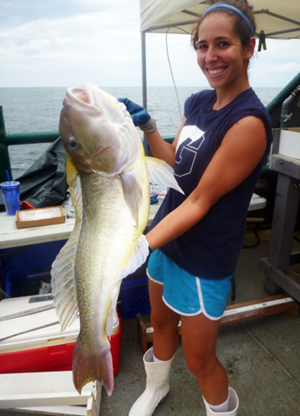
Susan Snyder’s experiences researching fish bile have shown her an overwhelming truth: to solve complex problems, one simply cannot work alone. To understand her findings, Susan has found that working with different scientists such as chemists, geologists and physicists is not only helpful, it is imperative. Susan is a master’s student at the University of Read More
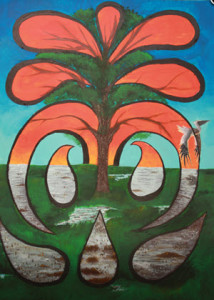
Each summer, parents send their children to camp, trying to match their interests while broadening their horizons. This year, the parents of ten Louisiana students hit the jackpot: the Coastal Waters Consortium (CWC) inaugural Art and Science Camp. This camp challenged participants, engaging both their analytical and creative talents to learn about a locally-relevant and Read More
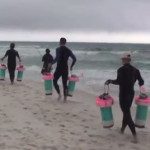
Scientists from the University of Miami have been visiting our area for the last three weeks studying the movements of ocean currents along the coast in order to observe how they carry oil, fish larvae or toxins in the water. On this particular day, 7th grade science students from Episcopal Day School in Pensacola were Read More
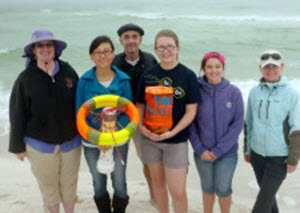
It was a tall order, but high school students rose to the challenge: they integrated physics, engineering, and scientific curiosity and created functional data-gathering drifters. They also became part of a scientific effort to improve predictions of how oil moves through coastal waters and onto shores. In December at Ft. Walton Beach, Florida, scientists deployed Read More
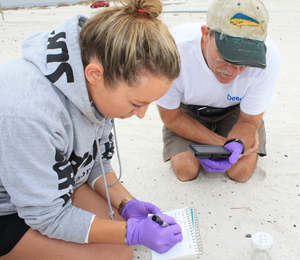
Talk about compounding interest! Put together scientists and teachers who are passionate about their work with students who are eager to help with ongoing research and watch as excitement fuels student engagement, sparks career interest, and feeds enthusiasm of all. And as a side bonus, research is conducted more efficiently in both time and cost. Read More
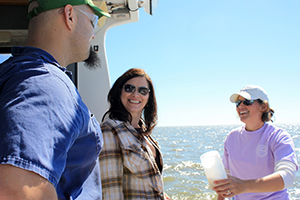
An old philosophical question asks, “If a tree falls in a forest and no one is around to hear it, does it make a sound?” Similarly, if a scientist makes an important discovery and people do not hear about it, will it matter? Scientists are conducting research about oil and other impacts on coastal marine Read More
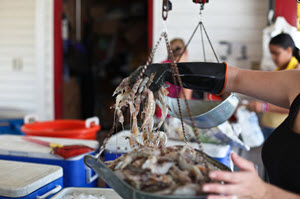
Many people outside of the Gulf Coast region are not aware of the large population of Vietnamese residents who live across this area, in concentrated communities from Texas to Alabama. Arriving as refugees during and after the Vietnam War, they settled along the Gulf Coast to work in the booming commercial fishing industry. Today, the Read More
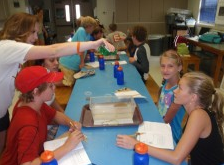
The methods used to remove the oil from the Gulf of Mexico – skimming, soaking, and dispersing – were as much in the news as the Deepwater Horizon incident itself. Three years later, a group of twenty-six middle school students conducted experiments to compare these methods as part of a week-long University of Texas Summer Read More

Ten high school teachers from Alabama and Florida are returning to their 2013-2014 science classes armed with new skills, materials, and inspiration. In July, these educators attended a five-day workshop entitled Technology in Marine Science. They built and operated Remotely Operated Vehicles (ROVs) and, more importantly, learned how to use them as teaching tools in Read More

Middle and high school teachers in Florida put on their sea legs, boarded the R/V Weatherbird II, and conducted science that matters to their students and communities. Dr. Teresa Greely (L) assists C-IMAGE Chief Scientist Leslie Schwierzke-Wade (middle) as she talks with 3rd graders at Jamerson Elementary in Florida during a Skype ship-to-shore video conference. Read More
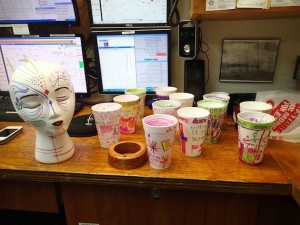
Laura Spencer, a graduate student in Dr. Steven DiMarco’s lab at Texas A&M University, took cups from three classrooms with her on the Gulf Integrated Spill Research Tracer cruise (G03) in the Gulf of Mexico. The cups were lowered in the water on one of the CTD casts. When the CDT was raised, the 5 Read More
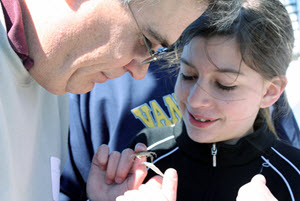
“My mom would love this boat ride.” “I wish my child could walk the marshes.” Murt Conover, Senior Marine Educator and Aquarist with the Coastal Waters Consortium (CWC), often hears comments like these when leading teacher and student groups at the Louisiana Universities Marine Consortium (LUMCON) facility. She thought it seemed like a “no brainer” Read More
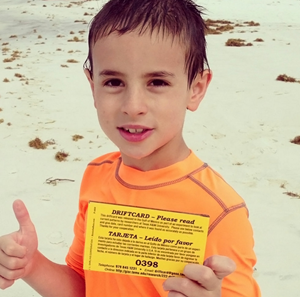
Summer fun check list: 1. enjoy the sun, sand, and surf along the beautiful Gulf of Mexico; 2. track ocean currents; and 3. win a prize. Track ocean currents? Win a prize? Yes! Adults and children from Florida to Texas are calling, emailing, and going online to report little yellow cards they find in the Read More
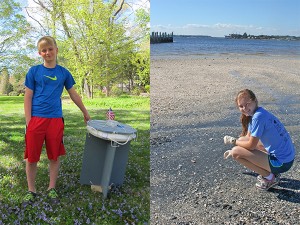
Scientists conducting GoMRI-funded oil spill research take their mission regarding society seriously: They employ cutting-edge technology to collect and analyze data using rigorous scientific parameters and publish their findings. But there are other ways these researchers define success, like working with students. When young students seek answers to scientific questions and contact them, these scientists Read More
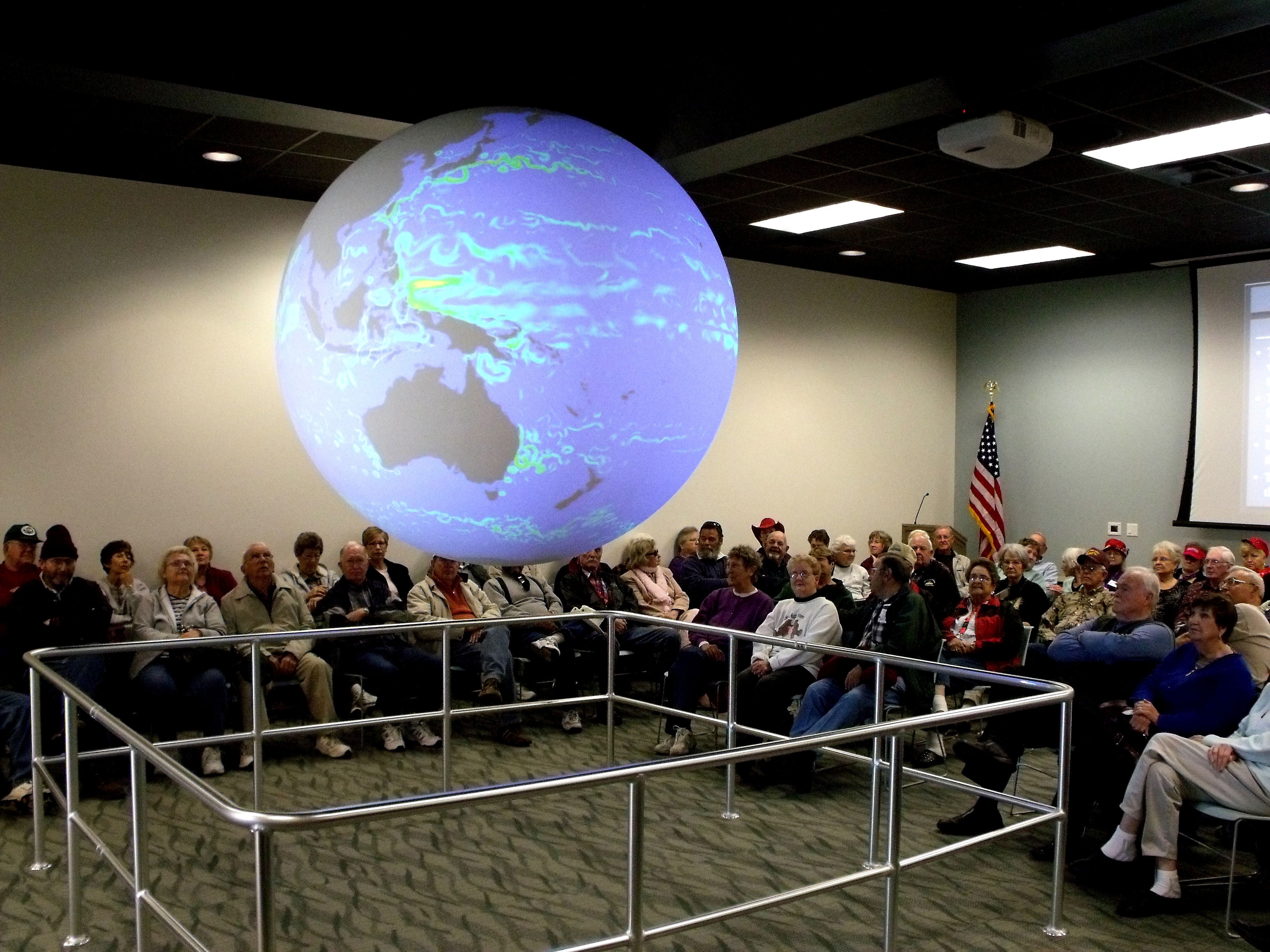
All the world’s a stage – literally – as oceanic, atmospheric, and geologic conditions and events come to life on a “revolving” globe. General public visitors attend a Science on a Sphere presentation at the Bay Education Center. (Photo by Jackie Hattenbach) Researchers and science educators are using visualizations of oil spills, tsunamis, and hurricanes Read More

